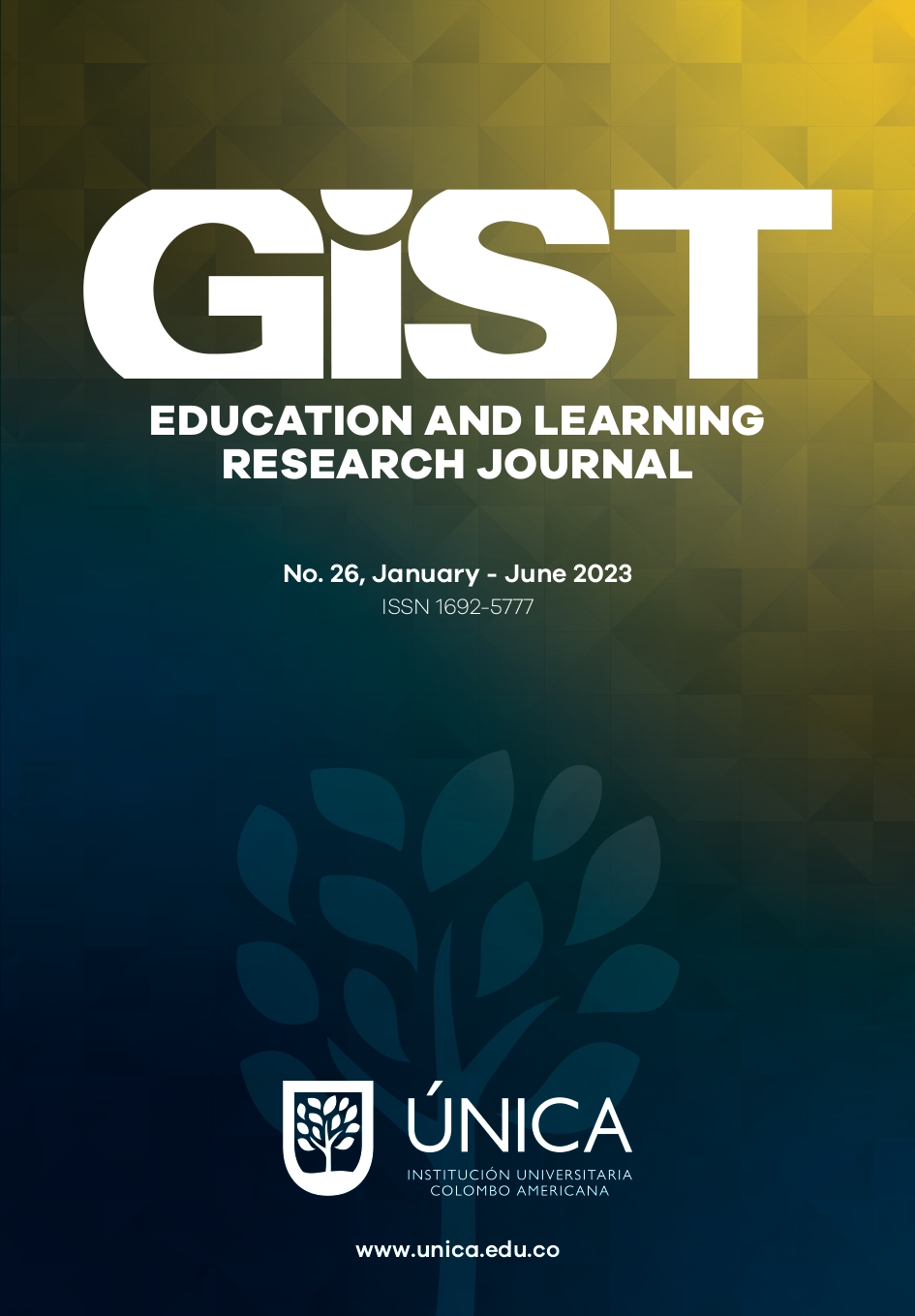Sugerencias de estudiantes de inglés como lengua extranjera para mantener su disposición a comunicarse en lecciones de inglés en línea
DOI:
https://doi.org/10.26817/16925777.1615Palabras clave:
Voluntad de comunicarse, lecciones de inglés en línea, estudiantes de inglés como lengua extranjera, sugerencias para mantener la disposición de comunicarseResumen
La voluntad de comunicarse (VDC) mejora el dominio de los estudiantes de inglés como lengua extranjera (EFL) y se ha convertido en un tema de investigación importante. En la literatura, varios estudios se centran en los motivos que afectan el VDC de los estudiantes de inglés como lengua extranjera. Sin embargo, se sabe poco sobre las sugerencias de los estudiantes de inglés como lengua extranjera de mantener su VDC en las lecciones de inglés en línea. Por lo tanto, el presente estudio tiene como objetivo conocer las sugerencias de los estudiantes de inglés como lengua extranjera para mantener su VDC en las lecciones de inglés en línea. Fue diseñado como un estudio de caso cualitativo. En el presente estudio participó un grupo de 40 estudiantes turcos de inglés como lengua extranjera. Los datos se recopilaron a través de una pregunta abierta en línea y las respuestas de los participantes se analizaron temáticamente. Los participantes hicieron varias sugerencias relacionadas con lecciones, temas, actividades, maestros, aulas, tareas y programas. Se discutieron los hallazgos, se explicaron las limitaciones del estudio y se hicieron sugerencias para estudios adicionales.
Descargas
Referencias bibliográficas
Aomr, J. A. W., Seng, G. H., & Kapol, N. (2020). Relationship between willingness to communicate in English and classroom environment among Libyan EFL learners. Universal Journal of Educational Research, 8(2), 605-610.
Basöz, T., & Erten, I. H. (2018). Investigating tertiary level EFL learners' willingness to communicate in English. English Language Teaching, 11(3), 78-87.
Brod, C. (1984). Technostress: The human cost of the computer revolution. Basic Books.
Cao, Y. (2011). Investigating situational willingness to communicate within second language classrooms from an ecological perspective. System, 39(4), 468-479.
Dewaele, J. M. (2019). The effect of classroom emotions, attitudes toward English, and teacher behavior on willingness to communicate among English foreign language learners. Journal of Language and Social Psychology, 38(4), 523-535.
Isma, A., & Baharuddin, A. F. (2022). Exploring students’ willingness to communicate (WTC) in Indonesian EFL classroom. Proceedings of English Linguistics and Literature, 3, 78-85.
Kamdideh, Z., & Barjesteh, H. (2019). The effect of extended wait-time on promoting Iranian EFL learners' willingness to communicate. International Journal of Instruction, 12(3), 183-200.
Kang, S. J. (2005). Dynamic emergence of situational willingness to communicate in a second language. System, 33(2), 277-292.
Kaufmann, R., & Tatum, N. T. (2018). Examining direct and indirect effects of classroom procedural justice on online students’ willingness to talk. Distance Education, 39(3), 373-389.
Kruk, M. (2019). Dynamicity of perceived willingness to communicate, motivation, boredom and anxiety in Second Life: The case of two advanced learners of English. Computer Assisted Language Learning, 35(1-2), 190-216.
Kruk, M. (2021). Changes in self-perceived willingness to communicate during visits to Second Life: a case study. The Language Learning Journal, 49(2), 240-250.
Lee, J. S., & Hsieh, J. C. (2019). Affective variables and willingness to communicate of EFL learners in in-class, out-of-class, and digital contexts. System, 82, 63-73.
Lee, J. S., & Liu, L. (2022). Dynamicity of EFL learners’ willingness to communicate in an online class. Journal of Multilingual and Multicultural Development, 1-19.
Ma, X., Wannaruk, A., & Lei, Z. (2019). Exploring the relationship between learning motivation and L2 WTC in an EFL classroom among Thai EFL learners. English Language Teaching, 12(7), 33-45.
MacIntyre, P. D., Clément, R., Dörnyei, Z., & Noels, K. A. (1998). Conceptualizing willingness to communicate in a L2: A situational model of L2 confidence and affiliation. The Modern Language Journal, 82(4), 545-562.
MacIntyre, P. D., & Doucette, J. (2010). Willingness to communicate and action control. System, 38(2), 161-171.
Mulyono, H., & Saskia, R. (2021). Affective variables contributing to Indonesian EFL students’ willingness to communicate within face-to-face and digital environments. Cogent Education, 8(1), 1-15.
Punyaporn, P., & Soontornwipast, K. (2022). An exploration of students' willingness to communicate in Thai EFL online classroom. Arab World English Journal (AWEJ) Special Call on CALL, 8, 70-87.
Şener, S. (2014). Turkish ELT students' willingness to communicate in English. ELT Research Journal, 3(2), 91-109.
Tan, K. E., & Phairot, E. (2018). Willingness to communicate among Thai EFL students: Does English proficiency matter?. Journal of Asia TEFL, 15(3), 590-602.
Shao, Q., & Gao, X. A. (2016). Reticence and willingness to communicate (WTC) of East Asian language learners. System, 63, 115-120.
Yashima, T. (2002). Willingness to communicate in a second language: The Japanese EFL context. The Modern Language Journal, 86(1), 54-66.
Zhang, J., Beckmann, N., & Beckmann, J. F. (2022). One situation doesn’t fit all: Variability and stability of state willingness to communicate in a Chinese College English classroom. Language Teaching Research, 26(3), 504-529.
Descargas
Publicado
Cómo citar
Número
Sección
Licencia
Derechos de autor 2023 GIST – Education and Learning Research Journal

Esta obra está bajo una licencia internacional Creative Commons Atribución-NoComercial-SinDerivadas 4.0.
| Estadísticas de artículo | |
|---|---|
| Vistas de resúmenes | |
| Vistas de PDF | |
| Descargas de PDF | |
| Vistas de HTML | |
| Otras vistas | |








